New Documentary Shines a Light on Brooklyn Teenager Miasia Clark
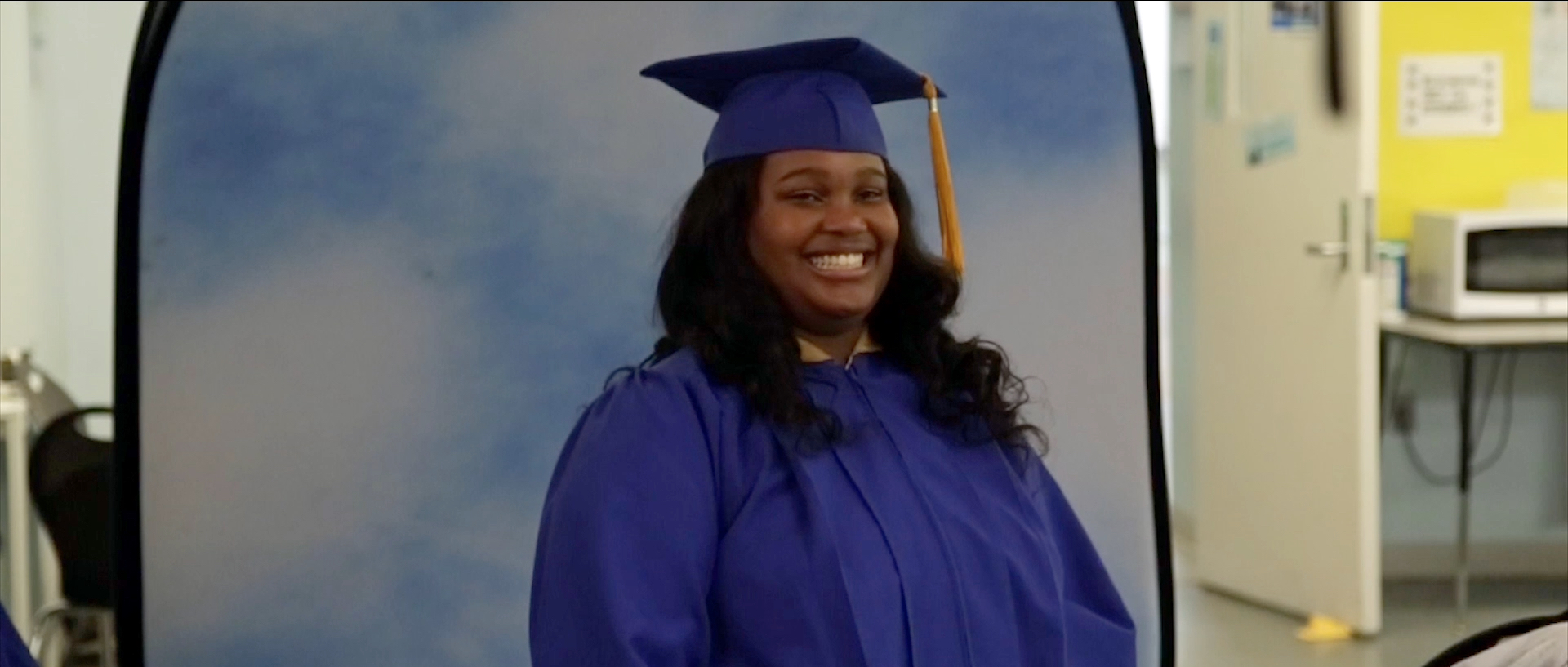
The Independent's Editor Speaks with Yvonne Michelle Shirley on her Film, Miasia: The Nature of Experience
Yvonne Michelle Shirley is a filmmaker whose most recent work, Miasia: The Nature of Experience, chronicles the life of Brooklyn teenager Miasia Clark as she navigates her everyday world—wrestling with the personal and the political in a fight for self-determination. Viewers encounter Miasia just weeks before she is set to present at the first ever Black Girl Movement National Conference. We watch as she prepares with her activist group, Girls for Gender Equity.
Girls for Gender Equity (GGE) is a dynamic, intergenerational organization committed to the physical, psychological, social, and economic development of girls and women. Under the direction of its founder, Joanne Smith, GGE trains young girls to be change makers and advocates for racial and gender justice. To find out more, visit Girls for Gender Equity at www.ggenyc.org.
Thank you so much, Yvonne, for taking time to speak with The Independent about your recent documentary, Miasia: The Nature of Experience. We are grateful for the chance to highlight this film and also the tremendous efforts of GGE. Before we begin, can you tell us something about your history as a filmmaker—the kinds of projects you’ve been involved with, your philosophy as an artist, about what inspires you?
Sure. When I was a Sociology and African American studies major in college, I took a class called Documentary in the African American Community with the filmmaker Louis Massiah. His work and teaching inspired me and introduced me to filmmaking as a social justice tool. The ideas introduced in that class have become a guiding framework and motivation for me.
I’m inspired by filmmaking in the social realist tradition, whether in documentary or narrative work. I love gritty, sensual stories exploring the everyday clashes with society that we all experience as individuals making our way through this life. I like examining how these experiences change us, how we resist conforming, and how social traumas echo through our lives and communities.
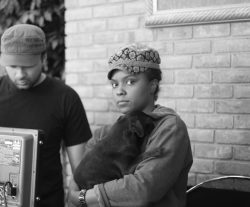
What is your connection with Girls for Gender Equity? How did you become involved with this group?
This was a blessing that fell into my lap. I was working with Salamishah and Scheherazade Tillet on developing a film for their multimedia show, SOARS—Story of A Rape Survivor. They are founders of the organization A Long Walk Home. They are also members of the organizing committee for the Black Girl Movement National Conference that took place last spring. Salamishah contacted me a couple of months before the conference and said that the committee thought it would be a good idea to have a short film produced about the conference. I was asked to submit a proposal. I learned that the conference was to include workshops facilitated by youth groups for other youth, so I decided that the film should be a portrait of one of these girls from one of these youth organizations. I wanted to follow her and her group as they prepared and participated in the conference.
Joanne Smith contacted me about visiting and meeting with the girls of GGE. I was able to sit in on a session; the girls were having preliminary discussions about their workshop for the upcoming conference. I was captivated! The girls were sharp, funny, and passionate about their work. Their rapport was familial—they were attentive, supportive, and playful. All the while managing to juggle and learn from each other’s differing opinions. They were really listening to one another, as they collectively formed ideas. It was all very rich. Miasia Clark was a leading member of the group—a high school senior with a clear, commanding voice. I felt immediately that she should be featured prominently in a film, and I am so thankful she agreed. We started filming the next week.
What was your goals with Miasia: The Nature of Experience? What specifically were you trying to achieve?
The main goal was to create a narrative drawn and led by Miasia. Going in, the film kind of presented itself as a coming-of-age tale. Speaking from my own experiences of being a black girl in this country, there is a period of realization, becoming conscious of a social tapestry, a history that surrounds you and that has a hand in molding your external everyday experiences. It’s a period of discovery and confrontation. There’s nothing natural about it or about handling it. The response to it all is very personal.
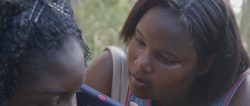
As I got to know Miasia, I thought that one thing this piece might be able to do is to capture this process of trying to find one’s way in a world organized by injustices and oppression targeted against you. With Miasia, there seemed to be this transformational experience that was actively taking place. Miasia identifies as many things—one of these is being an activist. And she’s so young. So I was curious about all that led her to that, to such a direct confrontational response to challenges of which she was just becoming conscious.
It seems daunting to try and capture the coming-of-age of an actual girl (as opposed to a fictional character)—a person feeling the magic of transformative change. How did you draw on your artistic sensibilities in this process? Can you elaborate on the aesthetic style of the film?
The driving aesthetic style is a verite, observational style. I love that storytelling method. And considering the subject matter—the complex and gifted girls of GGE including, of course, Miasia—there was no worthy short cut or substitute for the richness of just watching them be. Their natural way of being manifests the highest goals that we could ever imagine having for a film like this. And giving them this space to express themselves dovetailed with the stated goals of the Black Girl Movement National Conference. Another choice, stylistically speaking, was to shoot the film completely from Miasia’s perspective. To feel immersed in her point of view. We added a few conceptual elements to help it feel more “inner Miasia” at times, less gazing on her and the girls of GGE.
Yes! This certainly comes through in the film, which is very much an examination of a young woman’s interior life. Still, there are fantastic scenes of the GGE girls simply enjoying one another, drawing on camaraderie as they tackle intricate issues of systemic oppression. Can you say something about your approach in working with the teens? Also can you say more about what it was to witness these exchanges?
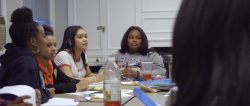
The GGE girls were incredible, as were Miasia and her family. My editor, Doug Lenox, and I could really sit and watch hours of the footage we had and be quite satisfied. We really appreciated how, at such young ages, the girls could sit and debate thoughts and ideas around race and gender oppression. They listened deeply to each other. They studied material, like Dr. Monique Morris’s book Pushout which deals with the school to confinement pipeline as it relates to black and brown girls, and they were able to synthesize these ideas, incorporating them along with the experiences of their own lives into a workshop for other girls. They advocated for each other even if they didn’t all always identify in the same ways. In a time when so many adult-led institutions struggle to have real meaningful conversations and practices related to undoing systems of oppression, these girls were doing it. It’s, of course, a credit to who they are, and it’s also a credit to Joanne Smith and the framework she’s created at GGE that enables this.
How did you get this project off the ground? Can you discuss the pre-production phase of your work?
I have to be honest; getting it off the ground was quite easy. Because Salamishah Tillet (the project’s executive producer) was also a conference organizer, the film was folded into the overall portfolio of the conference. The conference itself was a gargantuan effort, two years in the making (I think). But we were able to start shooting, maybe 3 weeks after the project was green lighted.
The turnaround time was very quick. One cause of consternation came from the fact that we really did not have much time to spend with Miasia and GGE before showing up with cameras. That’s not ideal. But the girls seemed unfazed by us, which was great. Maybe it’s a sign of the times; they are constantly documenting themselves.
In pre-production, I gathered a crew that not only was technically capable but also invested and engaged in bringing marginalized voices to the fore. With everyone involved on this project, I stressed the imperativeness of being extremely respectful and sensitive regarding our presence. My friend and colleague Ayanna Saulsberry came on to produce with me, and we brought in Jamal Solomon to DP. Doug Lenox (Evolution of a Criminal) was on board to edit. Together we had to make sure that our additional crew had the stamina and composure to do this type of verite shooting. We definitely had to run and gun physically, with the goal of still capturing composed, cinematic images.
No doubt there were challenges along the way. What were some specific difficulties you faced in creating the film? How were you able to work around these?
We had challenges with time and also with money. It did take us longer to shoot than we expected, and therefore we had to stretch the budget to cover this. And then, of course, we were working with actual people with busy lives, not paid actors. Miasia had a lot going on at the time. She was in the throes of major transitions and simultaneously participating in this national event, leading a workshop, and speaking. She was finishing high school, preparing for senior pictures, prom, and graduation. She was deciding where she would go to college and dealing with the challenges of raising money for her college tuition. There were also family events in play. She was about to be the first in her immediate family to go to college. And all of it seemed connected to her activist work, and the story she was preparing to share at the Black Girl National Conference. We just had to try and capture as much as possible because seeing, even just a collection of moments of it all in play, and watching her navigate through it, said so much more than her describing it in an interview or something.
I understand the film is featuring at BlackStar Film Festival on August 6th. How did this come about?
When we finished the film, we felt a premiere at BlackStar Film Festival would be ideal. BlackStar is an international festival that highlights works by and about people of African descent. Their lineups always include such a beautiful range of approaches and styles and voices. It is expertly curated to highlight the interconnectivity within diverse collections of work, and stories and people. We applied and luckily got in.
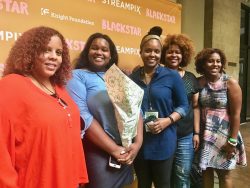
Congratulations on this, truly! How else have you developed an audience for the film? What are your distribution plans at this point?
We’re just beginning; BlackStar will be its premiere. We’re planning on continuing to push it on the festival circuit. The film was also made to be useful to the amazing organizations connected to the Black Girl Movement Conference: A Long Walk Home, Girls for Gender Equity, The Brotherhood Sister Sol, and others. So I look forward to working with these organizations and hopefully using the film to assist in their work.
What are your goals moving forward, for this film or other projects?
I think Miasia: The Nature of Experience will have a rich life. I look forward to finding a wide range of platforms through which to share the film. I’m still exploring this particular type of coming-of-age in a nonfiction form. I am compelled by stories of adolescents, particularly black girls, reckoning with society, fighting for self-determination. I think the first person point of view is a powerful story mode to explore this theme. I’ve co-written a feature with filmmaker Nikyatu Jusu called Flowers that explores these ideas. We’ll be co-directing the film and are gearing up to shoot next summer.
I’m also planning to do more short docs that take a hybrid form. I’m planning to shoot a short “docudrama” of sorts at my grandmother’s upcoming 90th birthday party in Miami. Family parties always unearth layers of history, relationship dynamics, and unresolved traumas—all wrapped up in affection, cultural traditions, beloved food, and music. It’s going to be challenging, but I want to see if I can pull it off.
Regions: Brooklyn
